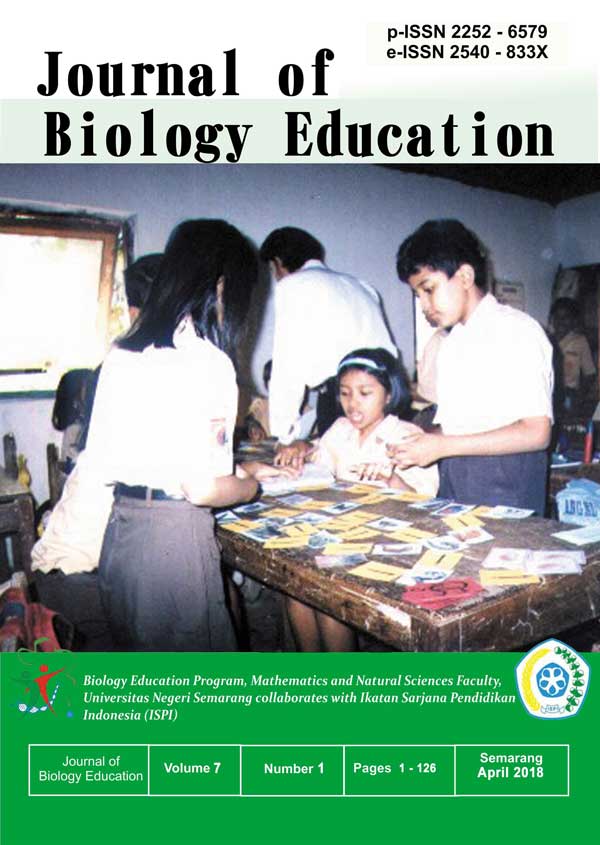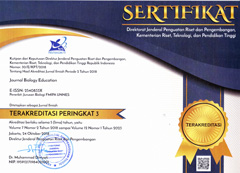The Quantitative And Qualitative Analysis Of Students Learning Outcomes According To Student Admission Line Of Biology Education Program Fmipa Unnes
Abstract
PP RI no. 66 of 2010 article 53B (1) and Permendiknas no. 34 of 2010 article 3 (1) state that a higher education unit which is organized by the government is required to recruit new undergraduate students through a national admission of at least 60% of the number of new students who are accepted for each Study Program. The objective of this study was to analyze the differences in student learning outcomes according to the admission line of Biology Education Program students of FMIPA UNNES. This study used sequential explanatory design combination method. The population of this study was the students of Biology Education Study Program of FMIPA UNNES class of 2013 to 2016. The quantitative samples were chosen using total sampling method and the qualitative samples were chosen using purposive sampling method. In this study, the students learning outcomes were in the form of GPA. The data of this study were collected using document study method, questionnaire, and interview. The data were then analyzed using descriptive technique percentage, two way anova, regression, and qualitative analysis of Miles & Huberman (Sugiyono, 2011). The results showed that the average of students' GPA of SNMPTN was 3.32, the average of students’ GPA of SBMPTN was 3.29, and the average of students’ GPA of SM was 3.25. The sig value in the two way anova test to examine the difference of GPA according to the admission line is caused by the level of family, campus, society environment, and learning motivation were 0.834, 0.322, 0.810, and 0,246> 0.00 respectively which means there was no significant differences in GPA among students of the three admissions line. The result of R2 value on the regression analysis showed that the most contributing variable to the GPA were the campus environment (86.1%), the learning motivation (82.2%), the family environment (76.7%), and the least was the level of community environment (74.8%). It can be concluded that there is no significant difference of students learning outcomes according to student admission line in Biology Education Program of FMIPA UNNES caused by the level of family, campus, society, and student's motivation.
The copyright of the article once it is accepted for publication shall be assigned to the journal as the publisher. The intended copyright includes the right to publish the article in various forms (including reprints). The journal maintains the publishing rights to the published articles.
This work is licensed under a Creative Commons Attribution 4.0 International License.








